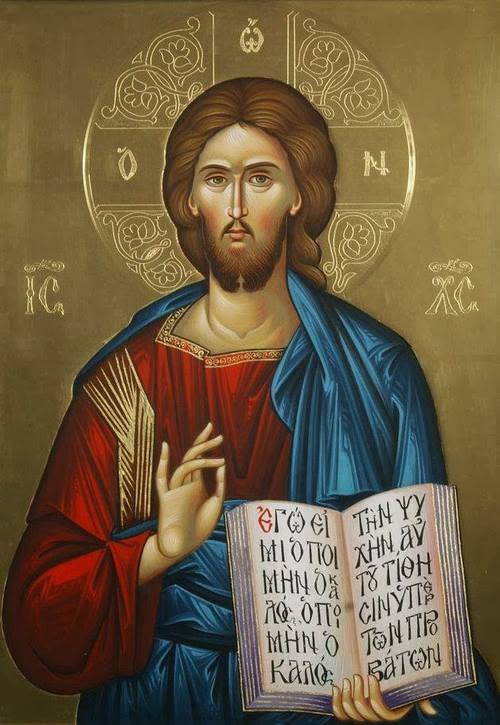|
The “Head” of the Church 
The existential unity of the Orthodox Church is manifested in the universal confession of a common faith and through communion in the Mysteries (Sacraments). The Orthodox Church regards no one but Jesus Christ Himself as the Head of the Church which is His Mystical Body. “Christ is head of the church; and He is the Savior of the body” (Ephesians 5:23).
There is no Orthodox “Pope”
An Orthodox Bishop
A Bishop has both a sacerdotal (priestly) and an administrative rôle in the Church. He is first and foremost a priest of the most-high God, the Presbyter (elder) celebrating the Holy and Sacred Mysteries (Sacraments) which unite the faithful to Christ. He is also ordained in apostolic succesion as a bishop (overseer) of a “flock” comprising faithful in a particular place, city, locality, or region – his diocese. An Orthodox Bishop heads the hierarchy of clergy in his diocese Each bishop is also regarded as a hierarch, signifying that he is the first among the priests, (or presbyters) in his diocese. Orthodox bishops in various geographic localities – dioceses – can also be regarded as visibly “at the head” insofar as they are successors to the Apostles and are responsible for overseeing and administering the affairs of local parishes. (congregations, churches).
Orthodox Bishops are “conciliar” or “synodal”
In practical matters, Orthodox bishops do nothing beyond the common consent of the other bishops within the regional geographic assembly called a “synod.” This term comes from the Greek noun σύνοδος (sýnodos) which means “assembly” or “meeting,” analogous to the Latin concilium meaning “council.” The many synods worldwide, representing the whole of an autocephalous Church, or of geographic regions within these, may also be regarded as visibly “at the head” of the Church individually and as an assembly in Apostolic succession. Jesus Christ always remains the “Head” of the Church whereas bishops simply lead the Churches and the faithful in maintaining what Jesus taught and the Apostles preached. A Holy Synod is the ecclesiastical governing body of one of the particular autocephalous Churches. It is presided over by a primate and consists, as members, of all the bishops to whom the primate is accountable. “Holy Synod” is used as a formal name for the body itself, as distinct from “synod” which more often refers to the actual meetings of these bodies. All autocephalous and some autonomous churches have their own church-wide holy synods. There are also local ones (typically called “eparchial synods”), especially if a particular church has territory spread out over a large area. Membership in a holy synod is determined by the traditions and canonical documents of a particular Church. In some Churches, all bishops who hold the title of metropolitan are considered members (e.g., the Church of Antioch), while in others, all active bishops—whether diocesan or auxiliary—are considered to be members (e.g., the Orthodox Church in America). Local synods typically consist of the primate and all diocesan bishops within the territory. |

